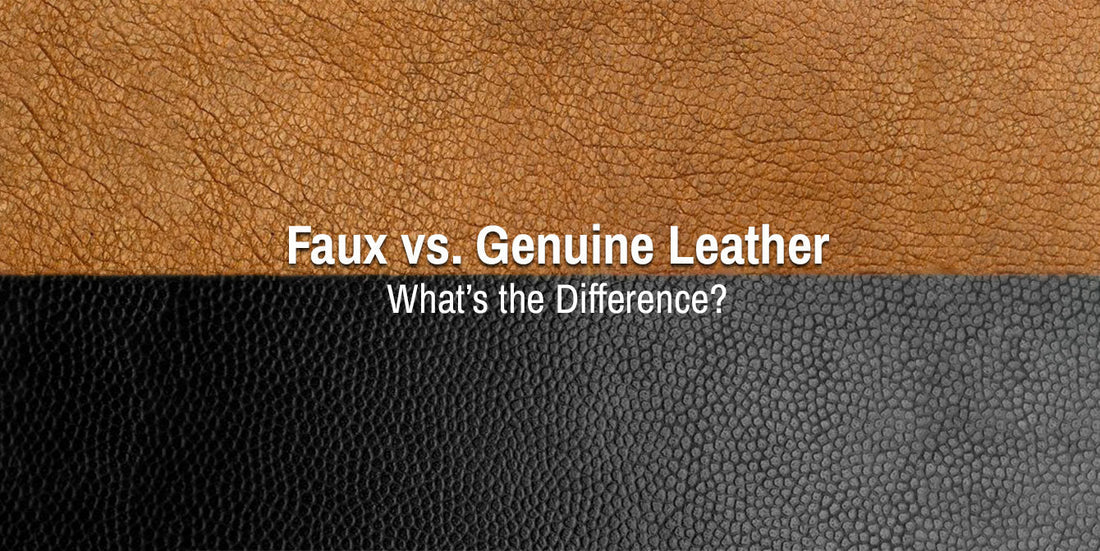
Faux vs. Genuine Leather: What’s the Difference?
Share
If you've ever shopped for a leather jacket, you've likely come across two major types: faux leather and genuine leather. While they may look similar at first glance, the differences run deep—from texture and durability to price and sustainability. Let’s break it down so you can make an informed decision the next time you shop.
1. What is Genuine Leather?
Genuine leather is made from animal hide, typically cow, sheep, or goat. It’s known for:
-
Natural grain and texture
-
Durability that improves with age
-
A distinct leather scent
-
Developing a beautiful patina over time
Each piece is unique and carries its own character. It’s often considered a long-term investment due to its strength and timeless appeal.
2. What is Faux Leather?
Faux leather (also called synthetic leather, vegan leather, or PU leather) is a man-made material usually crafted from plastic-based compounds like polyurethane or PVC. It mimics the look of real leather but:
-
Is lighter and often more uniform in appearance
-
Doesn’t develop patina or soften like real leather
-
Has a plastic-like or chemical smell
-
May not last as long, especially with heavy use
3. Durability Comparison
-
Genuine Leather can last for decades with proper care. It resists tearing, stretching, and can withstand wear and tear beautifully.
-
Faux Leather typically lasts a few years. It may peel or crack over time, especially in high-stress areas.
4. Price Point
-
Faux Leather is more affordable and widely accessible.
-
Genuine Leather comes at a higher price, but you're paying for authenticity, craftsmanship, and longevity.
5. Environmental Impact
This one’s nuanced:
-
Genuine Leather is a natural material but comes from animal sources. However, high-quality leather jackets often last for years, reducing the need for frequent replacement.
-
Faux Leather is cruelty-free but made from synthetic materials that are less biodegradable and can be environmentally taxing to produce.
Look for brands that use eco-conscious tanning or recycled materials in both cases.
6. Comfort & Feel
-
Genuine Leather adapts to your body over time, becoming more comfortable with each wear.
-
Faux Leather generally lacks breathability and may not be as skin-friendly in warm climates.
Final Verdict
Choosing between faux and genuine leather depends on your budget, values, and how long you want the jacket to last. If you're looking for timeless durability and natural feel, genuine leather is hard to beat. If you're opting for affordability and animal-free fashion, faux leather may be your pick.
Whatever you choose, make sure it aligns with your style, comfort, and conscience.
Explore genuine leather jackets options with WonXon—where craftsmanship meets conscious fashion.
